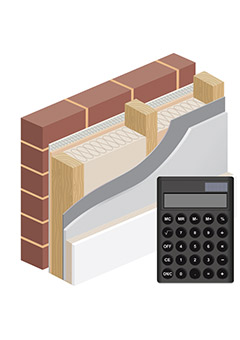
Image Source: Google
Energy-efficient design is a crucial aspect of modern architecture and construction. As we strive to reduce our carbon footprint and energy consumption, we must consider all factors contributing to a building's overall energy efficiency. One key component in this regard is the U value calculation.
Understanding U Value
The U value, also known as the thermal transmittance, is a measure of how effective a material is as an insulator. It quantifies the rate of heat transfer through a structure – the lower the U value, the better the material insulates. U values are crucial in determining the energy efficiency of a building, as they directly impact its heating and cooling requirements.
Factors Affecting U Value
- Material type and thickness
- Air gaps and ventilation
- Construction methods
- Windows and doors
- Overall building design
Importance of U Value Calculations
Calculating U values is essential in designing energy-efficient buildings for several reasons:
1. Compliance with Building Regulations
Many countries have specific building regulations that set maximum U values for different building elements. By calculating and meeting these U value requirements, you ensure that your design complies with the local standards and codes.
2. Energy Consumption Reduction
Buildings with low U values require less energy for heating and cooling. By accurately calculating U values and incorporating high-insulation materials, you can significantly reduce a building's energy consumption and operational costs.
3. Comfort and Indoor Air Quality
Proper insulation provided by low U values helps maintain a consistent indoor temperature, reducing drafts and cold spots. This not only increases occupant comfort but also improves indoor air quality by preventing condensation and mold growth.
4. Sustainability and Environmental Impact
Energy-efficient buildings have a lower environmental impact due to reduced energy consumption. By utilizing U value calculations in design, you contribute to sustainability efforts and help mitigate climate change by decreasing greenhouse gas emissions.
U Value Calculation Methods
There are various methods for calculating U values, depending on the complexity of the building structure and materials used:
1. Simplified Methods
These methods provide quick U value estimates based on typical construction details and material properties. They are suitable for initial design stages or simple building elements.
2. Detailed Calculation Software
Advanced software tools allow for precise U value calculations by accounting for specific construction materials, dimensions, and thermal bridging effects. These tools provide accurate results for complex building assemblies.
3. Building Energy Modeling
Energy modeling software simulates the energy performance of a building based on its geometry, materials, occupancy, and climate. U values are an essential input in these simulations to optimize energy efficiency strategies.
Conclusion
U value calculations play a crucial role in energy-efficient design by determining the thermal performance of building elements and overall energy consumption. By understanding and accurately calculating U values, architects and engineers can create sustainable buildings that minimize energy use, prioritize occupant comfort, and reduce environmental impact.
